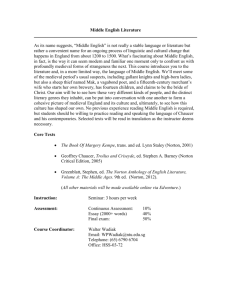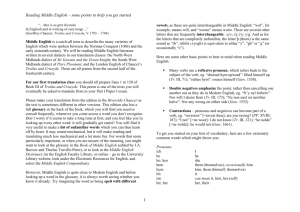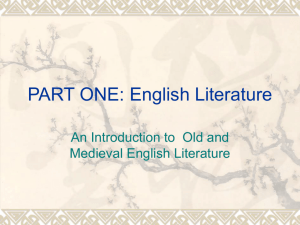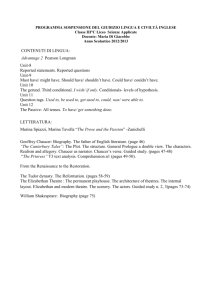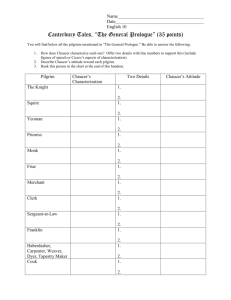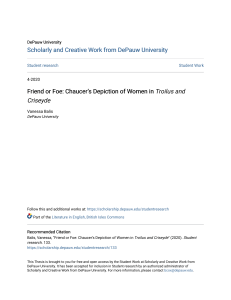Chaucer Option Autumn Term 2012 First Essay Titles
advertisement
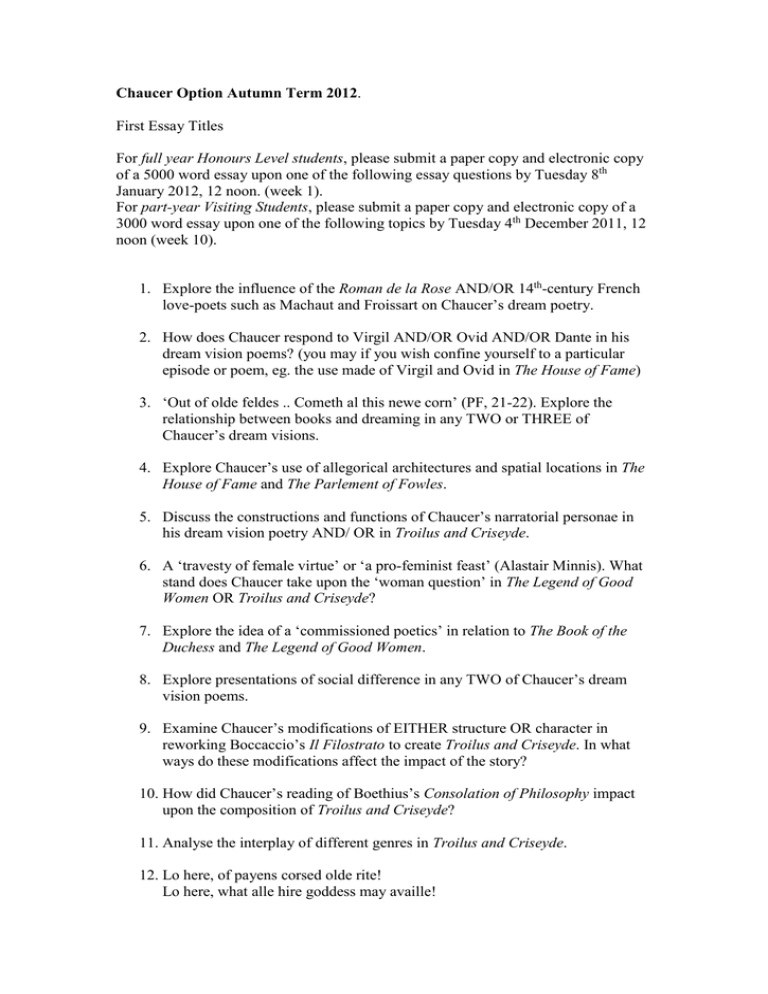
Chaucer Option Autumn Term 2012. First Essay Titles For full year Honours Level students, please submit a paper copy and electronic copy of a 5000 word essay upon one of the following essay questions by Tuesday 8th January 2012, 12 noon. (week 1). For part-year Visiting Students, please submit a paper copy and electronic copy of a 3000 word essay upon one of the following topics by Tuesday 4th December 2011, 12 noon (week 10). 1. Explore the influence of the Roman de la Rose AND/OR 14th-century French love-poets such as Machaut and Froissart on Chaucer’s dream poetry. 2. How does Chaucer respond to Virgil AND/OR Ovid AND/OR Dante in his dream vision poems? (you may if you wish confine yourself to a particular episode or poem, eg. the use made of Virgil and Ovid in The House of Fame) 3. ‘Out of olde feldes .. Cometh al this newe corn’ (PF, 21-22). Explore the relationship between books and dreaming in any TWO or THREE of Chaucer’s dream visions. 4. Explore Chaucer’s use of allegorical architectures and spatial locations in The House of Fame and The Parlement of Fowles. 5. Discuss the constructions and functions of Chaucer’s narratorial personae in his dream vision poetry AND/ OR in Troilus and Criseyde. 6. A ‘travesty of female virtue’ or ‘a pro-feminist feast’ (Alastair Minnis). What stand does Chaucer take upon the ‘woman question’ in The Legend of Good Women OR Troilus and Criseyde? 7. Explore the idea of a ‘commissioned poetics’ in relation to The Book of the Duchess and The Legend of Good Women. 8. Explore presentations of social difference in any TWO of Chaucer’s dream vision poems. 9. Examine Chaucer’s modifications of EITHER structure OR character in reworking Boccaccio’s Il Filostrato to create Troilus and Criseyde. In what ways do these modifications affect the impact of the story? 10. How did Chaucer’s reading of Boethius’s Consolation of Philosophy impact upon the composition of Troilus and Criseyde? 11. Analyse the interplay of different genres in Troilus and Criseyde. 12. Lo here, of payens corsed olde rite! Lo here, what alle hire goddess may availle! Lo here, this wrecched worldes appetites! (V, 1849-51) How satisfactory is the ending of Troilus and Criseyde? 13. How does Chaucer’s presentation and evaluation of human love change between his ‘French’ and ‘Italian’ periods (between his dream visions, and Troilus and Criseyde)? 14. In early 16th-century editions of Chaucer, Henryson’s Testament of Cresseid, was printed immediately after Troilus and Criseyde rather as though it were the sixth book of the poem. In what ways does the Testament of Cresseid continue Chaucerian themes and methods, and in what ways is it discontinuous?
